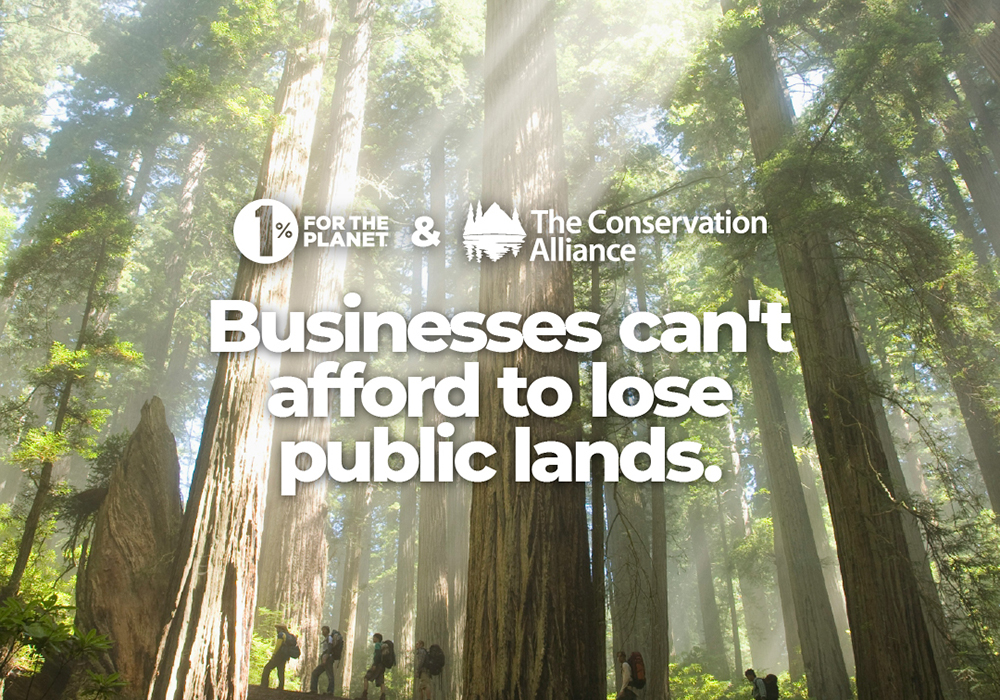
Public lands are often celebrated for their beauty — towering peaks, vast forests and unspoiled wilderness that inspire awe. But they are so much more than scenery. They provide critical habitat for wildlife, safeguard sacred lands and artifacts for hundreds of Indigenous tribes, and offer recreation and respite for more than 180 million people each year.
Crucially, they are also the backbone of a thriving outdoor economy that generates over $1.2 trillion in annual economic activity and the lifeblood of countless American gateway and perimeter communities. Public lands aren’t just natural treasures; they are critical business infrastructure.
Yet today, these invaluable resources are under threat. There are various efforts underway at the congressional, administrative and judicial levels to sell, defund or develop our nation’s public lands for activities like mining, drilling and logging. But America’s great outdoors are most valuable to the public that owns them and to the long-term health of our economy if they remain unspoiled. The sustained, long-term benefits of outdoor access for activities like recreation, tourism and subsistence farming far outweigh the short-term gains of resource extraction and mineral withdrawals.
And the threats are real. This summer, Congress passed Public Law 119-21, the so-called “One, Big Beautiful Bill Act,” which prioritizes development over conservation. It clears the way for expanded oil and gas drilling across the West, weakens environmental review processes for activities on public lands, and opens Alaska’s Arctic National Wildlife Refuge to lease sales. Additionally, the U.S. Department of Agriculture initiated a rollback of the Roadless Rule, which currently safeguards nearly 60 million acres of forest nationwide, encompassing over 25,000 miles of trail, 8,000 rock-climbing routes and 700 miles of whitewater. And attempts to undermine local treasures also abound — such as a proposal to lift the 20-year ban on mining in Minnesota’s Boundary Waters Canoe Area Wilderness, which would endanger one of the most iconic wilderness areas in the country, threatening its 1,100 pristine lakes and the local economies that depend on them.
Actions taken have reverberated through communities that rely on protected public lands and waters. Earlier this year, the Forest Service and National Park Service eliminated thousands of jobs in a sweeping round of layoffs. With staffing down roughly 24 percent, national parks like Zion and Glacier struggled to maintain trail crews, visitor centers, and emergency services — even basic internet for 911 dispatches at Glacier. These cutbacks endanger outdoor-guided services, local gear shops, lodges, and tourist amenities that depend on reliable and safe public access — and, more critically, they compromise the care and protection of the ecosystems themselves. The economic value of these lands is inseparable from the health of the natural resources at their core.
While both The Conservation Alliance and 1% for the Planet have long histories of working with conservation-minded industry leaders to protect outdoor spaces, the need for a larger, united front has become more urgent in the face of mounting threats to our public lands this year.
Recognizing this urgency, Brands for Public Lands was launched in March of this year. Already, more than 160 companies across 30 states — representing 72,000 employees and over $20 billion in annual revenue — have joined this collective effort to voice the business case for protecting these vital lands. From photographers and gear makers to brewers and outfitters, these companies recognize that protecting outdoor spaces is fundamental to their bottom line. Now, we’re calling on businesses everywhere to join this coalition and ensure that America’s most cherished landscapes are preserved for generations to come.
The calculus is simple: The long-term economic value of land and water conservation vastly outweighs the short-term profits of extraction. Protecting public lands isn’t just an environmental issue; it’s an economic one. When our most cherished places are threatened, the resilience of, and our access to, the outdoor spaces and wild landscapes our communities and businesses rely on is jeopardized. None of us — businesses and individuals alike — can afford this.
Join us at www.conservationalliance.com/brands-for-public-lands.
Kate Williams is CEO of 1% for the Planet, a global organization that inspires action and commitment so that our planet and future generations thrive. Paul Hendricks is the Executive Director of The Conservation Alliance, which harnesses the power of businesses from a wide range of industries to protect outdoor spaces and wild places.


